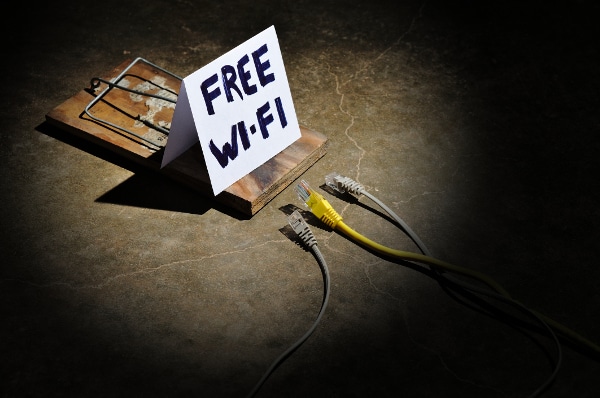Public Wi-Fi Dangers You Should Be Aware Of
 Public Wi-Fi is a necessity in coffee shops, shopping malls and sports stadiums, but just how secure is it? A recent video and article published by Android Authority explain public Wi-Fi dangers and just how vulnerable these systems are. With just a little bit of work, someone can easily capture data from a public Wi-Fi network without you ever knowing.
Public Wi-Fi is a necessity in coffee shops, shopping malls and sports stadiums, but just how secure is it? A recent video and article published by Android Authority explain public Wi-Fi dangers and just how vulnerable these systems are. With just a little bit of work, someone can easily capture data from a public Wi-Fi network without you ever knowing.
Why You Should Use Extreme Care When Connecting to Public Wi-Fi
All traffic that goes from your device to a public Wi-Fi hotspot is unencrypted, allowing users within range of the same Wi-Fi signal to see all activity occurring on that network. There are three main public Wi-Fi dangers being that:
- data is public and open for anyone to read
- Hackers can create Roque hotspots setup with the intent to steal your data
- Public Wi-Fi Hotspots can be manipulated to launch man-in-the-middle attacks redirecting your traffic to the wrong place allowing hackers to capture your password data
In the video, Gary Sims from Android Authority goes in detail about public Wi-Fi dangers and demonstrates how with a $20 network adapter from Amazon and a virtual machine, hackers can listen to nearby Wi-Fi Networks and see what sites are being viewed and photos are being shared.
How to Stay Safe on Public Wi-Fi
When using a public W-Fi hotspot, you are always running some risk, but the dangers of public Wi-Fi can generally be avoided if you follow these tips:
Only Browse Sites with an SSL
Thankfully, while it is possible to intercept network activity over a public hotspot, you can rest assured that if the site you are browsing is protected by an SSL, your login information will remain safe and most public Wi-Fi dangers can be avoided. This is because SSL data is encrypted, making it very difficult – if not impossible for your data to become compromised.
Do Not Visit Websites that Require Login Credentials without an SSL
Do not visit any site behind a login that is not protected by an SSL. Thankfully for social media lovers, Facebook and Twitter are both protected by SSLs so you’re free to utilize those channels when on a public network. Always look in to the left of the url in your browser window to determine whether a site is protected by an SSL. You shouldn’t be paying your bills at the coffee shop, but if you have to, look for the SSL.
Enable Authentication and SSL in Outlook
If you are using your laptop for work, go to your advanced email settings in Outlook and select the option to use SSL. If you are using a different webmail service, check with your provider on how to add encryption.
Turn off File Sharing in Your Advanced Network Settings
In the office, it’s normal for file sharing to be turned on, but when you take your work on the road with you it’s important to turn these settings off, because they essentially act as an open invitation for sniffers
Make Sure the Name of the Network is Correct
Sniffers will often set up their own hotspots to hope you log into theirs instead of the correct network. Double and triple check the name of the network with the venue to ensure you are logging into the correct location.
Never Install Software over Public Wi-Fi
One of the oldest tricks in the book is to inform you that your browser is using an outdated version of flash, directing you to a download malicious software instead. Even if you know you are downloading from a trusted source, wait until you get home.
Use a VPN
A VPN creates a tunnel between your device and the server, hiding it from the Wi-Fi provider and anyone who may be trying to sniff the network.
Get More Tech News and Tips from ThrottleNet
As a leading Managed Network provider in the St. Louis area, ThrottleNet regularly provides insights into the latest trends in the IT industry, mobile app development and new technology on our blog, TN Tech Talk series and social media channels. Like ThrottleNet on Facebook to stay up-to-date with the latest from our industry experts!



